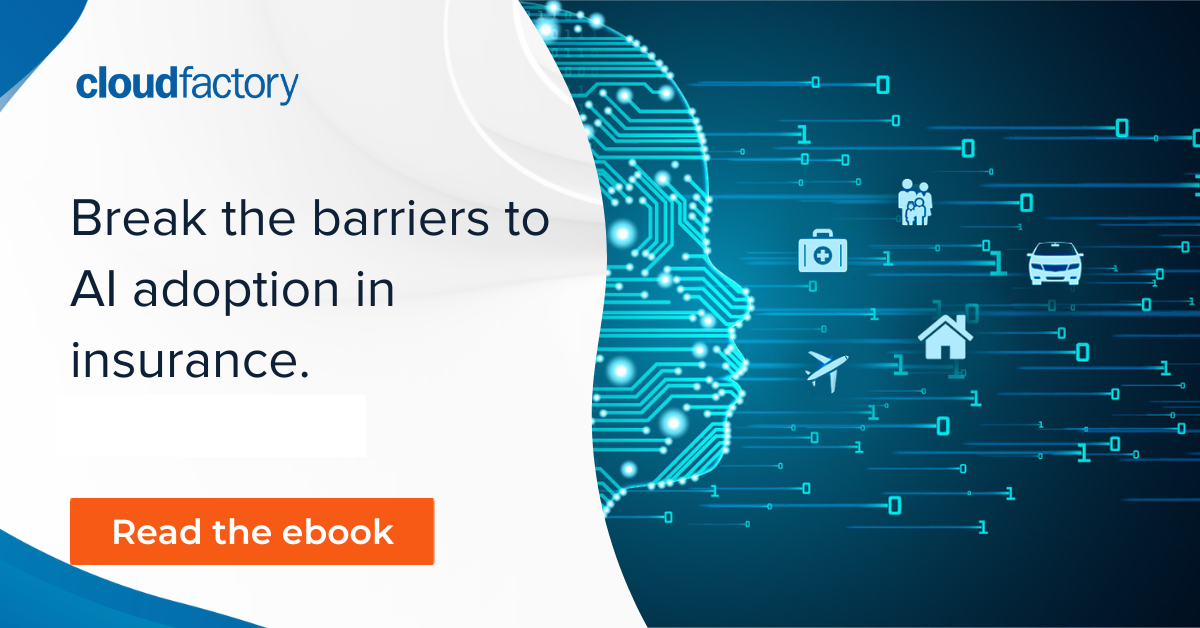The insurance industry is ready to digitize, modernize, and automate. Today’s consumers demand better experiences and faster claims processing. And today’s insurers are under more pressure than ever to reduce risk and grow market share. The key to it all? Using AI and machine learning to unlock and leverage data.
Dig into current opportunities across the insurance lifecycle and make a case for applying advanced data analytics and automation to pricing, risk models, operations, and your sales function using our guide: AI + Humans: The Future of Insurance. You’ll also read real-life examples of insurers and insurtechs that are already enjoying the benefits of AI, bringing new solutions to market quickly and improving outcomes.
Need a quick overview? Here’s a glimpse at why you should prioritize embracing AI across underwriting, data-driven decision-making, selling, and claims processing.
Insurance: automate to accelerate
There is no question that leading insurers and insurtechs are using advanced automation and AI across the insurance lifecycle. Here are the four key areas where the combination of AI and humans are changing the future of insurance.
- Underwriting automation
Underwriters are taking advantage of advanced automation and human-in-the-loop (HITL) workforces to preprocess insurance applications so they can provide quotes quickly and win more business.
According to The World Property & Casualty Insurance Report 2022, only 35% of insurers have adopted advanced data analysis tools such as ML-based pricing and risk models. These tools are critical to unlocking new data potential and enabling more accurate risk assessments. - Data-driven decision making
Carriers are partnering with insurtech companies to get property insights and predictive analytics from aerial data that help people make more informed decisions throughout the policy lifecycle.
In the article “The financial rationale for predictive analytics,” the Predictive Analytics Survey stated that over two-thirds [of surveyed insurers] report that predictive analytics have helped reduce issues and underwriting expenses, while 60% credit the additional insights for increases in sales and profitability. - Sales optimization
Insurance sales teams are using natural language processing and call audits to improve the performance of business development reps and sell more policies.
PricewaterhouseCoopers’ “AI for Insurance Companies” report agrees. It revealed that 65% of insurance executives believe their AI investments paid off in the form of better customer experiences. - Claims processing
Insurers are creating AI-based platforms to analyze 3-D images of vehicle damage in real time to speed claims processing.
According to the Solera Innovation Index, insurers say that the most significant barriers to AI adoption are cost to implement (73%), lack of workforce skill (65%), and time to market (53%).
Break the barriers to AI adoption in insurance
Uncover more insights into how insurers and insurtech companies are using advanced automation and AI for underwriting, data-driven decisioning, sales optimization, and claims processing in the full guide: AI + Humans: The Future of Insurance. You’ll also see how to scale your current AI and machine learning efforts using proven frameworks for managing high-quality data processing and data annotation work with a proven managed workforce, like CloudFactory.
Video Annotation Data Labeling Computer Vision Finance and Insurance AI & Machine Learning



